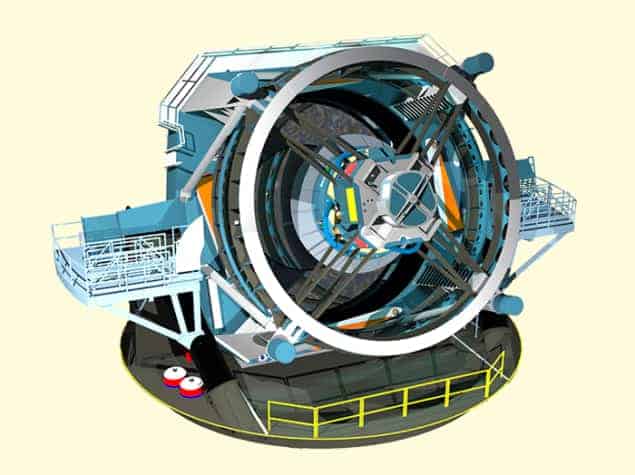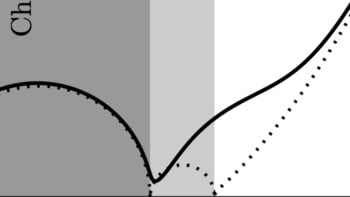
A powerful numerical code that uses Einstein’s general theory of relativity to describe how large-scale structures form in the universe has been created by physicists in Switzerland and South Africa. The program promises to help researchers to better incorporate dark matter and dark energy into huge computer simulations of how the universe has evolved over time.
At the largest length scales, the dynamics of the universe are dominated by gravity. The force binds galaxies together into giant clusters and, in turn, holds these clusters tight within the grasp of immense haloes of dark matter. The “cold dark matter” (CDM) model assumes that dark matter comprises slow-moving particles. This means that non-relativistic Newtonian physics should be sufficient to describe the effects of gravity on the assembly of large-scale structure in the universe. However, if dark matter moves at speeds approaching that of light, the Newtonian description breaks down and Einstein’s general theory of relativity must be incorporated into the simulation – something that has proven difficult to do.
Upcoming galaxy surveys, such as those to be performed by the Large Synoptic Survey Telescope in Chile or the European Space Agency’s Euclid mission, will observe the universe on a wider scale and to a higher level of precision than ever before. Computer simulations based on Newtonian assumptions may not be able to reproduce this level of precision, making observational results difficult to interpret. More importantly, we don’t know enough about what dark matter and dark energy are, to be able to conclusively say which treatment of gravity is most appropriate for them.
Evolving geometry
Now, Julian Adamek of the Observatoire de Paris and colleagues have developed a numerical code called “gevolution”, which provides a framework for introducing the effects of general relativity into complex simulations of the cosmos. “We wanted to provide a tool that describes the evolution of the geometry of space–time,” Adamek told physicsworld.com.
General relativity describes gravity as the warp created in space–time by the mass of an object. This gives the cosmos a complex geometry, rather than the linear space described by Newtonian gravity. The gevolution code is able to compute the Friedmann–Lemaítre–Robertson–Walker metric that solves Einstein’s field equations to describe space–time’s complex geometry and how particles move through that geometry. The downside is that it sucks up a lot of resources: 115,000 central-processing-unit (CPU) hours compared to 25,000 CPU hours for a similarly sized Newtonian simulation.
Other uncertainties
Not everyone is convinced that the code is urgently required, and Joachim Harnois-Déraps of the Institute for Astronomy at the Royal Observatory in Edinburgh points out that there are other challenges facing physicists running cosmological simulations. “There are many places where things could go wrong in simulations.”
Harnois-Déraps cites inaccuracies in modelling the nonlinear clustering of matter in the universe, as well as feedback from supermassive black holes in active galaxies blowing matter out from galaxies and redistributing it. A recent study led by Markus Haider of the University of Innsbruck in Austria, for example, showed that jets from black holes could be sufficient to blow gas all the way into the voids within the cosmic web of matter that spans the universe.
“Central and shining”
“In my opinion, the bulk of our effort should instead go into improving our knowledge about these dominant sources of uncertainty,” says Harnois-Déraps who, despite his scepticism, hails gevolution as a great achievement in coding. “If suddenly a scenario arises where general relativity is needed, the gevolution numerical code would be central and shining.”
Indeed, Adamek views the gevolution code as a tool, ready and waiting should it be required. Newtonian physics works surprisingly well for the current standard model of cold dark matter and dark energy as the cosmological constant. However, should dark matter prove to have relativistic properties, or if dark energy is a dynamic, changing field rather than a constant, then Newtonian approximations will have to make way for the more precise predictions of general relativity.
“The Newtonian approach works well in some cases,” says Adamek, “But there might be other situations where we’re better off using the correct gravitational field.”
The research is described in Nature Physics.



